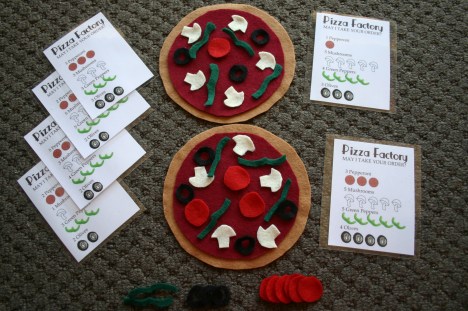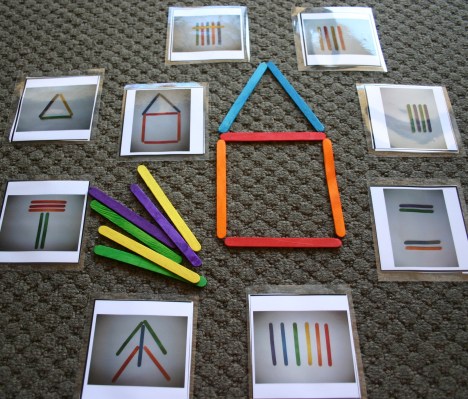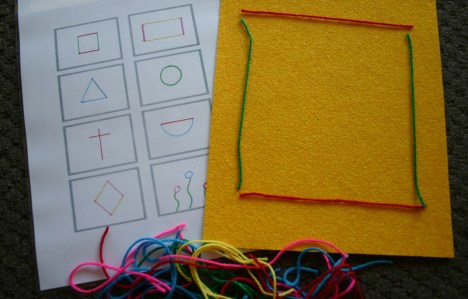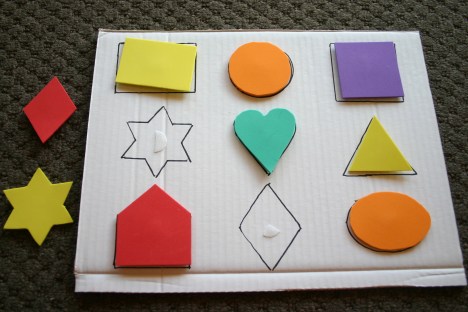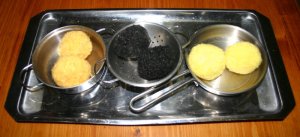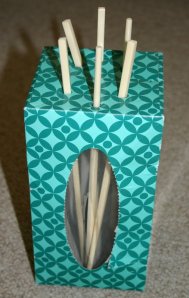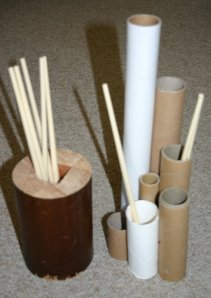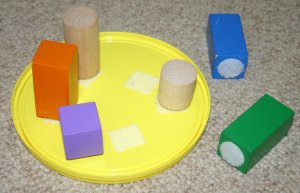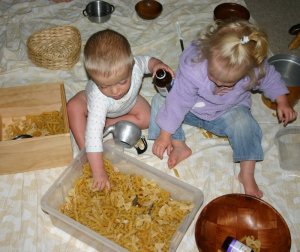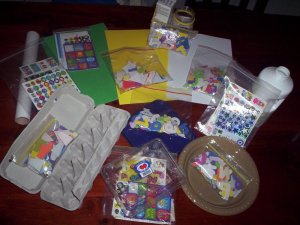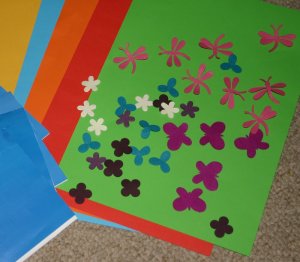Our 17 month old is staying with her Grandparents (along with some of her brothers and sisters) for 4 days and they have requested some playpen toys to use while she is there. This sensory tub or “pile of entertainment” is what I came up with. Perfect for highchair, mat or playpen times, these household objects will keep her going longer than the flashiest new toy ever could. (See this post for more info on flexible routines and links for training little people to sit and concentrate for lengthy periods.)

Containers filled with interesting things are always a hit with this age. Check for choking hazards and make sure nothing is easily breakable. Include objects to open and close, lids to take off and put on, things to fill and spill, stack and fiddle with.

A pile of plastic picnic plates to stack, old jewellery containers to open and shut, play keys, magnetic wooden ice-cream cone, pretend food, magnetic construction blocks, swizzle sticks in a jar, T/spoon and cup. Wander around the house and pile stuff in. Check the older kid’s toys for anything suitable such as the potato head toy. While she won’t be able to build it, she will take a couple of minutes to pull it to pieces and examine it.
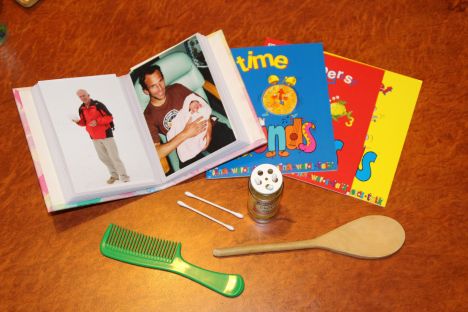
Take notice of what they pick up and walk around with when on the loose around the house. Mum’s cooking spoon, sister’s comb, brother’s hat, Dad’s shoe – chuck them in.
Poking Q-tips into a spice jar takes some doing at this age (Montessori small spaces activity) and bright books are good, along with a small photo album of family members and other common objects (pets etc.)
All of my children have rejected baby board books at this age but have been particularly interested in paper books. Perhaps because they see everyone around them reading them all the time? I set aside some paper paged books that are not particularly loved in case they get wrecked and give them to the little ones. I find if they are in perfect condition they will rarely be torn, but the moment there is even a small tear it will have a powerful draw and little fingers will have that page ripped out in a flash. It’s irresistible, they just can’t help themselves!
Filed under: Toddlers and babies, Workjobs & Montessori activities for highchair, mat or table time(mathematics, language, practical life & others) | Tagged: blanket time, highchair time, home-made Montessori, homeschooling with toddlers, mat time, playpen time, routines for toddlers, sensory tubs, travelling with young children | 2 Comments »









